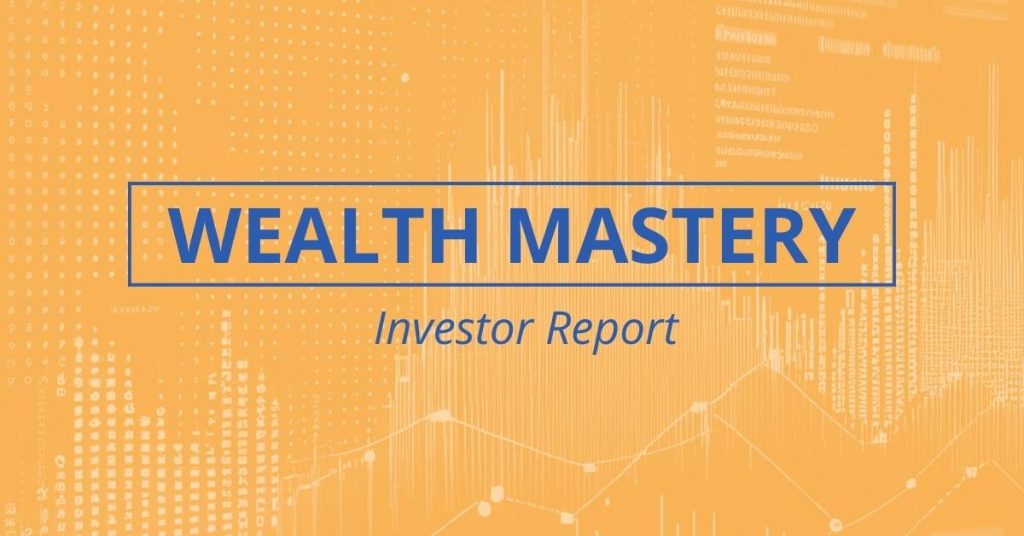Silicon Valley Bank, The Business of Blockchains, RTFKT & The Top Trending Coins

In This Issue
- Silicon Valley Bank, Stablecoins & Ethereum.
- For this weeks portfolio tip, I’ll be talking about how not everyone will make it.
- Web3 Academy explains the business of blockchains.
- Sam has a report for you on RTFKT.
- Rebecca has this week’s top trending coins.
Premium Subscription highlights this week:
- My Portfolio Moves: A lot happened in the last week and I’ve made a lot of changes to my portfolio. Don’t miss my weekly portfolio updates.
- Jesse’s altcoin report: While Enjin Coin may not have created the initial design of NFTs, they’ve come a long way in bringing NFTs to a point where they can actually be used in real-world applications.
- NFT mints: 3 upcoming NFT mints to keep an eye on.
What Just Happened?
Well… what an insane few days in the markets. It is rare that we see so much chaos in such a short amount of time. I hope you are doing ok.
Silicon Valley Bank
SVB has collapsed. It was the second-biggest collapse in US banking history and was the 20th biggest bank with around 180 billion in assets. The bank is deeply connected with a huge range of tech start-ups and for us, in crypto, it managed about 8% of USDC’s cash reserves. Money that is now stuck in limbo. It remains to be seen what kind of contagion effects the bank could kick off across the US economy and if any other banks are at risk here.
USDC, Dai, and Frax
Some of the biggest stablecoins (USDC, DAI, and FRAX) in the market depegged after the SVB collapse. This was a week after BUSD was slammed by the SEC. USDT is the last coin standing so to speak.
I personally have about ⅔ of my stablecoins in USDC. Ironically I switched from BUSD recently over fears about what would happen to it. Out of the frying pan and into the fire it seems. At the time of writing I am holding the USDC and do not want to sell for a significant loss. Although it doesn’t feel good and of course, I fear a further USDC breakdown. This is not a UST situation though, there will “hopefully” not be a death spiral to zero.
USDC is currently backed by 92 cents per token. They have 37 billion in assets making around 4.5% a year in interest. They will also likely get back the majority of their money from SVB, some are saying it will be 77 cents on the dollar. Meaning that USDC will then be backed by about 98 cents per token. The remainder could easily be filled by interest payments and VCs or Coinbase. This could all take a long time though.
I could be wrong and things may be worse than they appear. I could also lose a huge sum of money by staying in USDC if I am wrong. Suddenly my “safe stablecoin” has put me in a precarious bet on the future of the Circle company and the restoration of the USDC peg.
I am not happy at all about that.
“When” USDC repegs or maybe gets close enough say 98 or 99 cents, I will switch over to USDT and then take some more money out of the market. It just feels like there is just no safe place to keep money in crypto at the moment.
Crypto is exhausting sometimes.
BTW, Circle issued a statement saying that they are committed to meeting their obligations and that they will use corporate funds to cover any short falls. They are saying it will remain redeemable 1 for 1. Let’s see.
Ethereum Is A Security?
If the USDC peg situation wasn’t enough, the New York Attorney General came out on Thursday with a lawsuit against Kucoin. In that suit, they claimed that Ethereum is a security. If it were to be deemed so would be a real shit show for markets. But, this is just a complaint they filed, and it is not actually a complaint about Ethereum. Also in that same complaint, the NYAG said that all crypto coins are commodities. So it seems like they are not trying to pass judgment on ETH, just to try and nail Kucoin. Still, though, it did spook markets. And to be clear, the SEC is on a war path right now. SEC Chief Gensler said he believes ETH is a security, but the CFTC which currently claims jurisdiction over Ethereum says it is a commodity. Can everyone just stop messing with my internet money, please?
Lark’s Portfolio Tips
Not Everyone Will Make It!
There are some self-evident truths in the crypto markets. People may not always want to believe them, but they are true… at least according to me!
- Another face-melting bull run will come!
- Crypto is not going away. The industry is too big, Pandora’s Box has been opened and chaos is flowing into the world of finance.
- Big companies are all in panic mode in regard to crypto. Everyone is adopting a crypto strategy.
- The industry is only going to continue to grow. It will be a 10 Trillion dollar market cap industry by the end of the decade, likely much sooner.
- Crypto will mint millions of new millionaires!
- Crypto will have billions of daily users!
Sounds great right?
Yeah, it is, but not everyone is going to make it to the promised land of mainstream adoption.
Right now we’re on the cusp of something huge.
The next 7 years in crypto will probably be the most wildly profitable ones in the history of this market.
But you must avoid making key mistakes. Thus, doing the following will greatly increase your chances for unprecedented wealth creation!
- Survive! Just staying in the game and not blowing up your portfolio dramatically increases your chances of success. This means managing risk. This means taking your security very seriously. This means reducing leverage. This means spreading out your bets on low caps.
- Find your edge! Testnet hunting, DeF farming, swing trading, NFT flipping, or whatever else you might be into can all be insanely profitable! You don’t need to master them all. Play to your strengths. But when you do find that edge push it hard and make it make money for you.
- Experiment. I swear that people are literally missing out on life-changing gains simply because they are too lazy or too scared to bridge some money over to Arbitrum. (PS here is a free guide). Most people will wait until a coin lists on Coinbase to buy it. But the real gains come from getting in early, which means getting your hands dirty! Learn how to bridge assets and use different networks!
- Have a plan! I know this seems super obvious, but most people are just randomly throwing money into whatever is hot in the market. This is not a great strategy and is why so many lose, not win, in this market. Make a plan for your investments. Write it down and then try to stick to it as best you can. It will help keep you disciplined in tough times.
- Keep a cool head! This market can play insane games on your brain. Stay focused and remember why you are here. To make money! Don’t FOMO into pumps and be brave enough to buy when there is blood in the streets.
- Take profits! Far too many people get married to bags, don’t! Altcoin failure rates are like 90%, and most only make it one cycle. When you have that life-changing money just waiting for you to click sell and realize it then strongly consider taking some money off the table. Most don’t. Most Fail. This is why.

Start your Wealth Mastery Premium Subscription today!
The Business of Blockchains by Web3 Academy
Apple sells iPhones.
Starbucks sells coffee.
Blockchains sell blockspace.
For all the complexities that come with blockchain technology, it’s really as simple as that.
Blockchains produce a product called blockspace and they sell it via a term called gas.
They’ve ingrained this into my head over the years and it makes understanding the sustainability of this space so much easier.
If you want to understand which web3 real estate to build on, store your assets on or to invest in, understanding the business of blockchains concept is critical.
Blockchains are a business that sells a product.
Like any business, if they are not profitable, then over time the business will fail.
Luckily for us, a blockchain’s revenues and expenses are all on-chain. So we can take a look at how business is doing anytime we want 👀🔛⛓️
Today, the team at Web3 Academy is doing just that.
We’re going to show you how to understand the profitability of any blockchain in the space, from Layer 1s to Layer 2s.
Blockspace, The Killer Product of the 2020s
Blockspace has found product-market fit in recent years.
On Ethereum alone, user spent over $15,000,000,000 to use its blockspace.
But why has it reached product-market fit?
People worldwide find value in permissionless, peer-to-peer movement of digital assets, whether it involves stablecoins, trading currencies, buying/selling access to communities or digital art.
Similar to valuing freedom of speech, we also value freedom to transact, which blockchains provide.
Of course, like most products, not all blockspace is created equal. Some is more valuable than others.
Blockchain Revenues and Expenses
Bitcoin’s blockspace only handles basic transactions or static NFTs without utility.
On the other hand, Ethereum and other L1s offer smart contract capabilities, adding significant value for their blockspace price. Programmable transactions are particularly useful when conducting more complex transactions.
Additionally, some blockspaces are more secure and faster than others, with varying costs.
In the crypto world, the bottom line is what truly matters, regardless of a product’s features or costs.
Even if a product finds product-market fit, profitability is necessary for success. Examples such as Myspace, WeWork, and AOL demonstrate this reality.
Similarly, blockchains must sell their blockspace at a profit to remain sustainable.
You may ask if blockchains are profitable since they don’t have traditional expenses.
While blockchains don’t have employees or offices and can become self-sustaining public goods, they still have revenues and expenses. For long-term sustainability, a net positive (profitable) balance is necessary.
L1 and L2 blockchains have different revenue and expense models, so let’s start with L1.
L1 Blockchain Revenue
To use blockchains, users pay a fee known as gas, usually in the blockchain’s native token. Gas fees can be seen as the blockchain’s revenue or earnings.
Below are the 1 day revenues of various L1 Blockchains as well as their 7 day averages in USD.
L1 Blockchain Expenses
Blockchains also have expenses as they need to pay miners or validators for their services to ensure the chain’s security and transaction execution.
Blockchains do this in 2 ways, meaning, they have 2 forms of expenses:
Expense #1: Gas Fees
Gas fees collected by blockchains are paid to miners or validators who secure the chain and enable transactions.
Most blockchains pay all fee revenue directly to these parties, so the chart above effectively shows gas fee expenses. This expense is sustainable since it comes from revenues.
Ethereum and Polygon use a “burn” feature to reduce supply and increase token value, rather than pay validators with $ETH or $MATIC.
Expense #2: Issuance:
Blockchains reward miners or validators with newly created tokens as an expense, similar to a government subsidy.
However, unless the blockchain has a burn mechanism greater than supply increases, it is an unsustainable expense that devalues the token.
Cryptofees.info provides a list of yearly issuance and dollar value for L1 Blockchains.
Let’s take a second and compare the profitability of a few L1s.
Profitability Of L1 Blockchains
Below are the revenues (gas fees), expenses (issuance) and the resulting “profit” of 4 L1 Blockchains. Profit is in quotations as it’s not technically profit, I will explain below.
Bitcoin:
- Revenue = $563,748/day
- Expenses = ($21,996,207/day)
- Profit = ($20,988,086/day)
Avalanche:
- Revenue = $15,231/day
- Expenses = ($757,324/day)
- Profit = ($1,022,682/day)
Solana:
- Revenue = $47,257/day
- Expenses = ($1,744,088/day)
- Profit = ($1,696,832/day)
Ethereum:
- Revenue = $6,151,473/day
- Expenses = ($3,918,375/day)
- Profit = $2,233,098/day
So what are we looking at here?
Blockchains must generate revenue to pay for security while avoiding overinflation and keeping miners incentivized.
Profitability is essential for sustainability. At the moment, Ethereum is the only profitable blockchain in existence.
However, let’s look into things a bit more granular.
Profitability of Proof-of-Work Blockchains
PoW blockchains pay their security providers (miners) more than PoS blockchains pay their security providers (validators) because miners require larger and more expensive equipment that needs to be replaced every few years.
Additionally, miners have electricity costs that validators don’t have. However, both miners and validators must earn enough to cover their expenses.
97.4% of Bitcoin’s security costs are covered by inflation.
Inflation halves every 4 years until all 21 million Bitcoins are mined by 2140. Unless Bitcoin increases in value or generates more fees, miners will make 50% less every 4 years.
Currently, Bitcoin earns only $563,748/day in fees with no upward trend.
Bitcoin’s growth and rising demand have driven its price upwards over time, compensating for its lack of revenue as it halves inflation.
However, this sustainability model relies on continued demand and price increase. If demand and price stagnate over the next 120 years, Bitcoin may not be able to afford its security costs and could become bankrupt.
One solution is to reduce expenses for miners, such as mining equipment and electricity costs.
Profitability of Proof-of-Stake Blockchains
Validators of proof-of-stake blockchains have much lower operational expenses compared to miners of proof-of-work blockchains.
For instance, 98% of Solana’s security expenses are mainly subsidized by inflation, which is currently at 6.29%/year.
Without the subsidies, Solana would only have a daily budget of $35,012 to pay validators, which would only amount to about $19/day per validator, given its current number of validators (1891).
Solana currently relies on inflation subsidies for its security, but as a low-fee blockchain, it’s unclear how it will become self-sustaining.
Ethereum has a more manageable security budget, with 71% paid from revenues and 29% from inflation.
Ethereum also uses a burn mechanism on a % of its fees generated, resulting in a net negative in supply, which helps to manage a sustainable token.
Currently, ETH is reducing its supply by .086% while also paying validators 7% on their investment per year. Now that’s a sustainable business model!
Ultimately, to stay solvent long-term, blockchains must increase their revenue in the form of fees, but high-fees limit scalability and appeal to users.
The solution?
Layer 2 (L2) blockchains, which generate revenue from fees, but do not require validators or miners.
L2 blockchains can settle transactions on a secure and sustainable blockchain like Ethereum, making it a perfect fit for their needs.
In case you need a refresher on L2s, the team at Web3 Academy has written a PRO Report on blockchain scaling.
Profitability of Layer 2 Blockchains
L2s, such as Arbitrum and Optimism, charge gas fees like L1s. These two L2s are currently the most advanced and are built on top of Ethereum.
Below are their daily revenues.
L2s only need to pay for transactions on the L1 blockchain, which is covered by their revenue. See the L2 security expenses below.
Arbitrum:
- Revenue = $99,932/day
- Expenses = ($79,408/day)
- Profit = $20,524/day
Optimism:
- Revenue = $63,495/day
- Expenses = ($41,271/day)
- Profit = $22,224/day
L2s’ sustainable business model is clear: they keep a portion of the fees and rely on Ethereum for security and transaction settlement. L2s can then use the profits to reinvest or share with token holders. 👀
Key Takeaways
It’s all about incentives.
For blockchains to function long term, the people that secure the network must be profitable.
They need to generate revenue, maintain token value, limit expenses, and produce a desirable product, all while staying decentralized and competitive.
It’s not as simple as you might think.
Blockchains must ensure profitability for those securing the network while also generating enough revenue, maintaining decentralization, and producing a competitive product that users will pay to use.
Currently, only the Ethereum ecosystem has a sustainable business model thanks to intuitive tokenomics and L2s. Other blockchains like Bitcoin or Solana may also find a self-sustaining model in the future, but only time will tell.
That’s it for today on the business model of blockchains!
We hope this PRO Report equipped you with the tools necessary to evaluate a blockchain’s long-term sustainability to guide your investment decisions going forward.
If you’re interested in more reports like this one, sign up for our PRO membership here.
What is RTFKT? by Sam
RTFKT is a memorable name in the world of web3, so let’s dive into what RTFKT is, what it has planned, and whether it’s a project worth gaining exposure to.
How Did RTFKT Begin?
Established in January 2020, RTFKT was a small outfit focused on the metaverse, AR, fashion, and using blockchains and gaming engines to combine digital and physical items. The timing was perfect, as these were exactly the areas that were to blow up in interest over the next couple of years, and RTFKT quickly gained attention.
If you go to RTFKT’s website, they neatly tie in a little sci-fi storytelling too, denying rumors that a rogue AI is creating their designs, and explaining how company plans have been pulled forward from a scheduled 2040 take off date due to accelerations in human consciousness.
RTFKT Up To Now
CloneX and Takashi Murakami
Image credit: CloneX
The core NFT collection within the RTFKT ecosystem is CloneX, a collection of 20,000 3D avatar-style PFPs. They minted towards the end of November 2021 and sold out in a matter of minutes, despite a 2 ETH price tag.
One justification for those high prices (besides the timing: post-JPEG Summer and pre-bear market crash, when the NFT community was ETH-rich and bullish) was that the metaverse-ready CloneX avatars were produced in collaboration with Japanese contemporary artist Takashi Murakami.
Image credit: Perrier and Takashi Murakami
Murakami is famous for cartoonishly psychedelic work that bridges pop culture and exclusive art, and for his many top-end collaborations, taking in projects with the likes of Louis Vuitton, Perrier, and Billy Eilish. He’s also well known for embracing NFTs and web3 culture, not only with RTFKT, but through his own Murakami Flowers project.
Nike Acquisition
In December 2021, RTFKT was acquired by Nike. Since then, the trend of established corporations executing web3 strategies has accelerated, but Nike identifying RTFKT was an early move by one of the biggest brands in the world.
Nike also set up its .SWOOSH web3 platform, which is focused on virtual apparel, makes use of the Polygon sidechain, and is distinct from, but has close interconnection with RTFKT.
Since then, RTFKT dropped a multitude of NFTs in addition to CloneX, some of which are entirely digital, and some of which are linked to physical goods, primarily focused on special edition sneakers. Physical items contain scannable NFC tags that link to the NFT from which the clothing was claimed, creating lasting verification between physical and digital items.
Image credit: RTFKT and Nike
Clone X holders were airdropped an item called a MNLTH box which, when opened, contained virtual Nike sneakers, and a Skin Vial, which is connected to the sneakers to customize their appearance.
Image credit: RTFKT and Nike
There were also developments called Space Drip, and Space Drip 2, which brought in some talented artists to design customized sneakers, with the iconic Nike Air Force 1 as a base template, and these could actually be claimed as physical items.
For anyone neither very online nor interested in the metaverse, this might all sound less preferable than just going to the shops and buying some shoes. Fair enough, but if you believe that digital assets can be as desirable to collectors as physical products, then RTFKT and Nike are early movers.
By the way, if you buy an RTFKT NFT on secondary that unlocks further items, then be careful to check that it’s still eligible for any claims. You can do that by pasting the NFT’s OpenSea link into the checker on the front page of the RTFKT site.
Collaborations
Image credit: RTFKT and Rimowa
When it comes to dropping new collaborations, RTFKT is well-connected, and some highlights up to now include a sneaker drop with NFT-focused artist Fewocious, more sneakers for holders of the most iconic NFT collection in existence, CryptoPunks, and a partnership with luxury luggage manufacturer Rimowa, among several other joint moves (check the collections tab on the RTFKT site for a comprehensive list).
Exodus
Image credit: Exodus
CloneX holders were previously airdropped Space Pods and Loot Pods, which are virtual living spaces for their avatars, creating the beginnings of a metaverse-like experience. The Exodus expansion now allows for those pods to be upgraded to new homes, called Exo Pods and Lux Pods, and this is in collaboration with web3 gallery platform Oncyber, allowing users to display collectibles.
Upcoming Plans
Project Animus
Image credit: RTFKT
2023 will see companion creatures enter the CloneX world, through Project Animus. Full details and dates have not yet been announced, but CloneX holders have early access to claim something called an Animus Egg, which, presumably, will hatch into a creature at a later date. If you’re not a CloneX holder, you can jump in anyway by picking up an Egg on secondary, or wait for the public sale, with total supply undefined but not to exceed 40,000, of which 20,000 are reserved for CloneX holders.
Ledger
Image credit: RTFKT and Ledger
A partnership with leading hardware wallet maker Ledger was announced last month. The collaboration will see the release of an all-white RTFKT Ledger Nano S Plus and Nano X, and the Nano X model will also come with a silver RTFKT pendant, although this will only be available to holders of CloneX or Ledger Market Pass NFTs.
Is RTFKT Worth Buying Into?
Image credit: RTFKT
RTFKT combined style, expertise and ideal timing to make eye-catching early moves in the world of web3 digital fashion. As a result, it’s now a part of the Nike empire, giving it clout, stability, and the capacity to pull in collaborations with the biggest names. What’s more, Takashi Murakami’s input has been extremely valuable, giving CloneX a left-field artistic tilt, and creating a balance between mainstream appeal and unconventional cachet.
In terms of production values, everything RTFKT puts out is constructed to the highest quality, and always looks impressively shiny and futuristic. The project is endlessly productive, and appears committed to web3 for the long haul.
On the negative side, the RTFKT ecosystem can come across as overly-complex. This is the result of rapid growth, which is good, but it’s difficult for newcomers to get a grip on the wide array of drops, collaborations and expansions that have been created up to now, particularly as they cross over between the physical and the digital, and are interlinked with one another.
This is in the nature of big NFT projects though, as web3 is open and experimental, and the genesis collection at the center of the RTFKT world, CloneX, looks like a comfortable hold, its position cemented as an in-demand collectible combining art and utility.
Go Premium To See This Weeks Top 3 NFT Mints
Subscribe to the Wealth Mastery Premium Investor Report to get this weeks top 3 NFT mints AND gain full access to the premium archives.
Trending Coins This Week by Rebecca
Here are my key takeaways from the trends this week and it’s been jam-packed full of partnerships, launches, and integrations.
1 – Baby Doge Coin is a dog meme token on the BNB chain that’s burned 1 quadrillion tokens valued at around $2.6M in its latest burn event.
2 – ZigZag is a DEX built on zkSync and Starknet that’s completed its airdrop, sending the ZZ token to more than 100,000 users. This airdrop made up 34% of the total ZZ supply making it the largest in crypto history.
3 – Aura Finance is a DeFi liquidity provider on Balancer that’s hit two new milestones. Aura’s total-valued locked (TVL) hit a new all-time high after a $36M inflow to OlympusDAO and 70K auraBAL tokens were minted in just two transactions over the past week.
4 – Access Protocol is a content monetization protocol on Solana and Starknet that’s launched its first creator NFT drop with 4 different NFTs up for grabs to Peach Pool subscribers.
5 – Gala is a play-to-earn (P2E) gaming and music ecosystem that will be one of the top partners at the Game Developers Conference later this month. Gala Games have also done a call out on social media for content creators to create gaming content for them.
6 – Gamium is a metaverse project that’s recently announced a collaboration with Meta and Telefonica through the Metaverse Activation Programme. The GMM token has skyrocketed over 600% in a 24-hour period to a new all-time high.
7 – Synthetix Network is a derivative liquidity protocol provider that’s recently launched its v3 upgrade on Ethereum.
8 – Optimism is an Ethereum L2 scaling solution that’s published a post explaining how the upcoming Bedrock upgrade will reduce protocol costs and security fees by 47%. The Optimism team has also been at the ETH Denver conference.
9 – SingularityNET is a decentralized AI marketplace that’s announced the launch of Rejuve AI’s utility token RJV. The launch event will take place later this month.
10 – Velodrome Finance is a DEX on Optimism that’s generated record weekly fees after Coinbase’s Layer-2 network announcement.
11 – Radiant Capital is a decentralized, non-custodial lending protocol on Arbitrum that’s seen the RDNT/USDT trading pair launch on Kucoin. Radiant Capital has also integrated price feeds from Chainlink.
12 – Blur is an NFT marketplace that’s announced another airdrop of 300M+ BLUR tokens. The BLUR token has since hit a new low as holders are concerned the airdrop will increase the supply.
13 – Vela is a DEX on Arbitrum that’s surpassed $1B in trading volume as the team has unveiled its open beta roadmap. Phase 2 of the roadmap is focused on stabilization and scalability whilst Phase 3 is the countdown to the official launch of the exchange.
14 – Polygon is an Ethereum side chain that’s launched Polygon ID, its decentralized web identification service powered by ZK proofs. Polygon has partnered with Mercy Corps Ventures to bring blockchain education to underserved communities.
15 – GMX is a DeFi perpetual exchange that’s seen many new and existing protocols building on top of GMX due to its real yield. GMX has integrated with FactorDAO in a vault partnership. The GMX token is also now listed on Cwallet.
Follow Rebecca on Twitter and Instagram.
Final Notes
For more info on the largest bank collapse since 2008, click on my YouTube video below 👇

Thank you so much for your support, and I truly hope that today’s issue will give you insights needed to help you master your wealth.
If you are reading this it means you are on the free version of the Wealth Mastery Investor Report, which is great for news and tips on the crypto markets.
If you really want to take advantage of fastest growing asset class EVER, I highly recommend you join us in the Premium Investor Report.
You’ll immediately get access to:
- Deep dive Altcoin report & The Trending Coin Report
- Technical Analysis on the crypto large caps and overall market
- Token sales, Airdrops and DeFi Tutorials
- Updates on the NFT Ecosystem and new mints
- My Investment Portfolio Updates
See you next time!
Lark and the Wealth Mastery Team
Recommended Services
💰 BINANCE: BEST EXCHANGE FOR BUYING CRYPTO IN THE WORLD 👉 10% OFF FEES & $600 BONUS
🚀 BYBIT: #1 EXCHANGE FOR TRADING 👉 0% SPOT FEES AND $4,450 IN BONUSES
🔒 BEST CRYPTO WALLET TO KEEP YOUR ASSETS SAFE 👉 BUY LEDGER WALLET
Legal Disclaimer
Wealth Mastery (Lark Davis, and the Wealth Mastery writing team) are not providing you individually tailored investment advice. Nor is Wealth Mastery registered to provide investment advice, is not a financial adviser, and is not a broker-dealer. The material provided is for educational purposes only. Wealth Mastery is not responsible for any gains or losses that result from your cryptocurrency investments. Investing in cryptocurrency involves a high degree of risk and should be considered only by persons who can afford to sustain a loss of their entire investment. Investors should consult their financial adviser before investing in cryptocurrency.
You can find a full disclosure of all my crypto & venture investments here.




